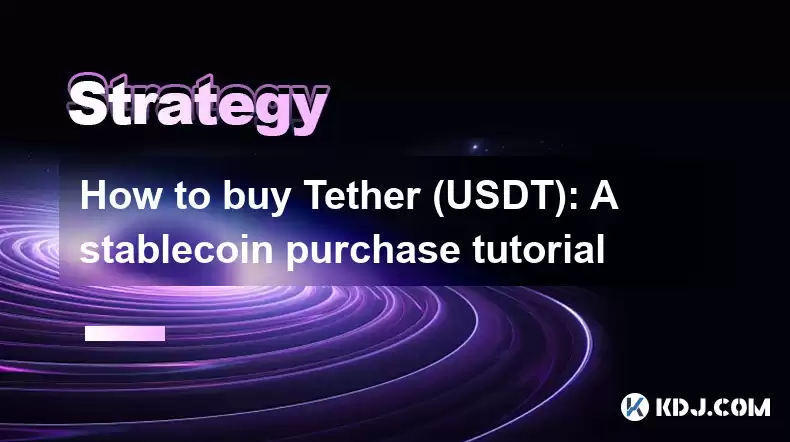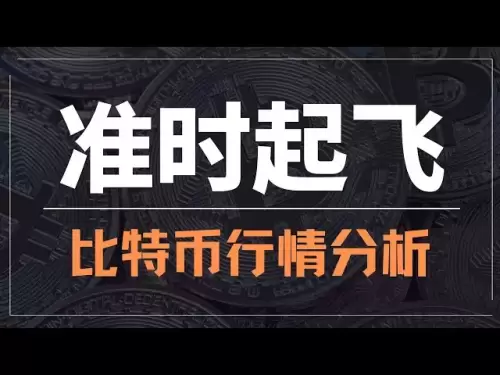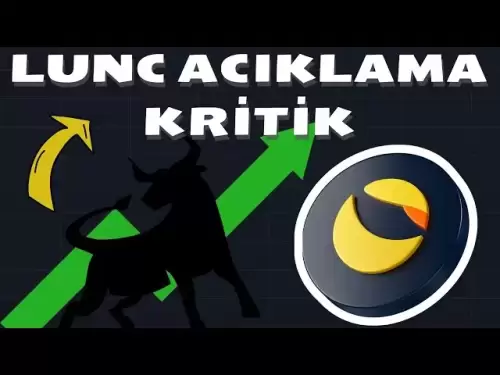-
 Bitcoin
Bitcoin $116400
0.87% -
 Ethereum
Ethereum $3819
3.86% -
 XRP
XRP $3.048
1.62% -
 Tether USDt
Tether USDt $1.000
0.03% -
 BNB
BNB $777.2
0.60% -
 Solana
Solana $169.3
0.46% -
 USDC
USDC $0.0000
0.02% -
 TRON
TRON $0.3414
2.06% -
 Dogecoin
Dogecoin $0.2126
3.33% -
 Cardano
Cardano $0.7527
1.21% -
 Hyperliquid
Hyperliquid $38.86
1.02% -
 Sui
Sui $3.683
5.27% -
 Stellar
Stellar $0.4048
1.45% -
 Chainlink
Chainlink $17.91
6.62% -
 Bitcoin Cash
Bitcoin Cash $576.9
1.29% -
 Hedera
Hedera $0.2487
1.03% -
 Ethena USDe
Ethena USDe $1.001
-0.01% -
 Avalanche
Avalanche $22.46
1.07% -
 Litecoin
Litecoin $120.8
1.69% -
 UNUS SED LEO
UNUS SED LEO $8.963
-0.30% -
 Toncoin
Toncoin $3.301
2.33% -
 Shiba Inu
Shiba Inu $0.00001250
1.13% -
 Uniswap
Uniswap $10.06
3.45% -
 Polkadot
Polkadot $3.731
1.56% -
 Dai
Dai $1.000
0.01% -
 Bitget Token
Bitget Token $4.416
1.58% -
 Cronos
Cronos $0.1482
3.73% -
 Monero
Monero $250.0
-12.34% -
 Pepe
Pepe $0.00001075
2.16% -
 Aave
Aave $274.6
4.17%
How to buy Tether (USDT): A stablecoin purchase tutorial
To buy Tether (USDT), choose a reputable exchange like Binance or Coinbase, deposit funds, trade for USDT, and optionally withdraw to a private wallet for security.
Apr 10, 2025 at 10:28 pm

Tether (USDT) is a popular stablecoin that is pegged to the value of the US dollar, making it a stable and reliable cryptocurrency for transactions and trading. If you're interested in purchasing Tether, this tutorial will guide you through the process step-by-step. Whether you're a beginner or an experienced crypto user, you'll find the information you need to buy USDT easily and securely.
Choosing a Cryptocurrency Exchange
The first step in buying Tether is to choose a reputable cryptocurrency exchange that supports USDT trading. Some of the most popular exchanges that offer Tether include Binance, Coinbase, and Kraken. When selecting an exchange, consider factors such as security, fees, user interface, and the availability of USDT trading pairs.
- Visit the website of the exchange you've chosen.
- Create an account by providing your email address and setting a strong password.
- Complete the verification process, which may require you to submit personal information and identification documents.
Depositing Funds into Your Exchange Account
Once your account is set up and verified, you'll need to deposit funds to purchase Tether. Most exchanges support deposits in various forms, including bank transfers, credit/debit cards, and other cryptocurrencies.
- Navigate to the deposit section of your exchange account.
- Choose your preferred deposit method (e.g., bank transfer, credit card).
- Follow the on-screen instructions to complete the deposit process, which may involve entering your bank details or card information.
- Wait for the funds to be credited to your exchange account, which can take anywhere from a few minutes to several days, depending on the deposit method.
Buying Tether (USDT)
With funds in your exchange account, you're ready to buy Tether. The process may vary slightly depending on the exchange you're using, but the general steps are as follows:
- Go to the trading section of the exchange.
- Search for the USDT trading pair you want to use (e.g., USDT/BTC, USDT/ETH, or USDT/USD).
- Enter the amount of USDT you want to buy or the amount of your chosen currency you want to spend.
- Review the order details, including the price and any applicable fees.
- Confirm the order to execute the trade and purchase your Tether.
Withdrawing Tether to a Private Wallet
For added security and control over your Tether, you may want to transfer your USDT to a private wallet. This step is optional but recommended for long-term storage.
- Choose a reputable wallet that supports Tether, such as Trust Wallet or Ledger.
- Generate a new Tether address in your wallet.
- Go to the withdrawal section of your exchange account.
- Enter the Tether address from your wallet and the amount of USDT you want to withdraw.
- Review the withdrawal details and any associated fees.
- Confirm the withdrawal to send your Tether to your private wallet.
Using Tether for Transactions and Trading
Now that you have Tether in your possession, you can use it for various purposes within the cryptocurrency ecosystem. USDT is commonly used for trading on exchanges, as a stable store of value, and for cross-border transactions.
- To use Tether for trading, navigate to the trading section of your exchange and select a trading pair that includes USDT.
- To send Tether to another user, go to the send or transfer section of your wallet or exchange account, enter the recipient's Tether address, and specify the amount you want to send.
- To convert Tether back to fiat currency, use the sell or withdraw section of your exchange account to trade your USDT for your desired currency.
Frequently Asked Questions
Q: Is Tether (USDT) always worth $1?
A: Tether aims to maintain a 1:1 peg with the US dollar, but its value can fluctuate slightly due to market demand and supply. In most cases, the price of USDT remains very close to $1.
Q: Can I use Tether for everyday purchases?
A: While Tether is not as widely accepted as traditional payment methods, some merchants and online platforms do accept USDT as a form of payment. However, its use for everyday purchases is still limited compared to fiat currencies.
Q: Are there any risks associated with holding Tether?
A: Like any cryptocurrency, there are risks associated with holding Tether. These include the risk of exchange hacks, wallet security breaches, and the potential for Tether to lose its peg to the US dollar. It's important to use reputable exchanges and wallets and to stay informed about the stability of Tether.
Q: Can I earn interest on my Tether holdings?
A: Some platforms and decentralized finance (DeFi) protocols offer the opportunity to earn interest on Tether holdings through lending or staking programs. However, these opportunities come with their own risks and should be researched thoroughly before participating.
Disclaimer:info@kdj.com
The information provided is not trading advice. kdj.com does not assume any responsibility for any investments made based on the information provided in this article. Cryptocurrencies are highly volatile and it is highly recommended that you invest with caution after thorough research!
If you believe that the content used on this website infringes your copyright, please contact us immediately (info@kdj.com) and we will delete it promptly.
- Pi Coin's dApp and AI Potential: Building a Decentralized Future
- 2025-08-08 02:30:12
- Bitcoin, Greenidge, and Liquidity: Navigating the Crypto Currents in NYC
- 2025-08-08 02:30:12
- Crypto Phishing Alert: $3 Million USDT Loss Highlights DeFi Risks
- 2025-08-08 01:10:12
- Crypto Presale Mania: Is Punisher Coin the High ROI King?
- 2025-08-08 01:10:12
- Online Betting, Platforms & Crypto Access: What's Hot in 2025
- 2025-08-08 00:50:12
- Layer Brett: The Meme Coin Primed for 100x Gains?
- 2025-08-08 01:50:12
Related knowledge

How to avoid common crypto investment mistakes?
Jul 13,2025 at 01:35am
Understanding the Risks of Crypto InvestmentInvesting in cryptocurrency can be highly rewarding, but it also comes with significant risks. One of the ...

What is a long-short crypto strategy?
Jul 15,2025 at 10:56am
Understanding the Basics of a Long-Short Crypto StrategyA long-short crypto strategy is an investment approach where traders simultaneously take long ...

What is a long-short crypto strategy?
Jul 11,2025 at 01:28pm
Understanding the Basics of Long-Short Crypto StrategyA long-short crypto strategy is an investment approach where traders take both long and short po...

How to use the RSI indicator for crypto?
Jul 12,2025 at 03:56pm
Understanding the RSI Indicator in Cryptocurrency TradingThe Relative Strength Index (RSI) is a momentum oscillator used to measure the speed and chan...

Is copy trading a good strategy for crypto beginners?
Jul 12,2025 at 08:28am
Understanding Copy Trading in the Cryptocurrency MarketCopy trading is a strategy where novice traders replicate the trades of experienced investors a...

How to build a crypto portfolio with $1000?
Jul 13,2025 at 08:14pm
Understanding the Basics of Cryptocurrency InvestmentBuilding a crypto portfolio with $1000 starts with understanding the fundamentals of cryptocurren...

How to avoid common crypto investment mistakes?
Jul 13,2025 at 01:35am
Understanding the Risks of Crypto InvestmentInvesting in cryptocurrency can be highly rewarding, but it also comes with significant risks. One of the ...

What is a long-short crypto strategy?
Jul 15,2025 at 10:56am
Understanding the Basics of a Long-Short Crypto StrategyA long-short crypto strategy is an investment approach where traders simultaneously take long ...

What is a long-short crypto strategy?
Jul 11,2025 at 01:28pm
Understanding the Basics of Long-Short Crypto StrategyA long-short crypto strategy is an investment approach where traders take both long and short po...

How to use the RSI indicator for crypto?
Jul 12,2025 at 03:56pm
Understanding the RSI Indicator in Cryptocurrency TradingThe Relative Strength Index (RSI) is a momentum oscillator used to measure the speed and chan...

Is copy trading a good strategy for crypto beginners?
Jul 12,2025 at 08:28am
Understanding Copy Trading in the Cryptocurrency MarketCopy trading is a strategy where novice traders replicate the trades of experienced investors a...

How to build a crypto portfolio with $1000?
Jul 13,2025 at 08:14pm
Understanding the Basics of Cryptocurrency InvestmentBuilding a crypto portfolio with $1000 starts with understanding the fundamentals of cryptocurren...
See all articles

























































































